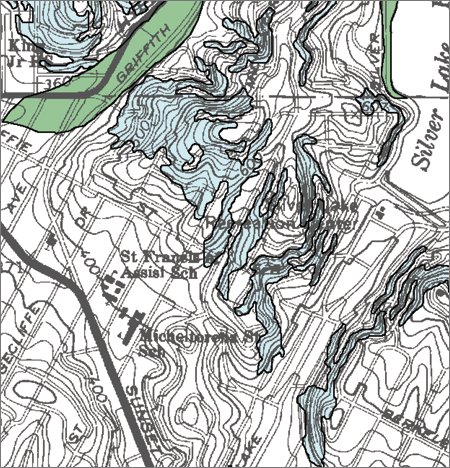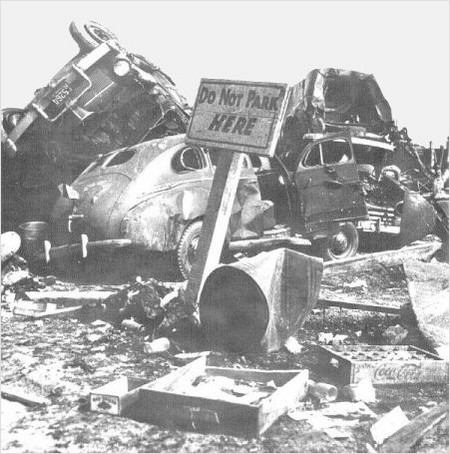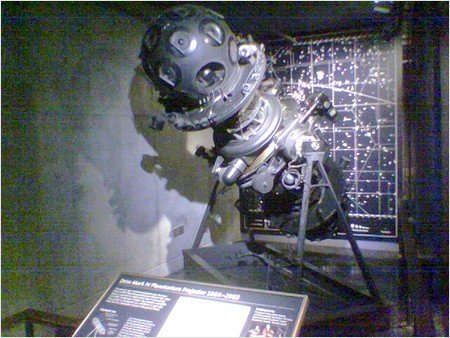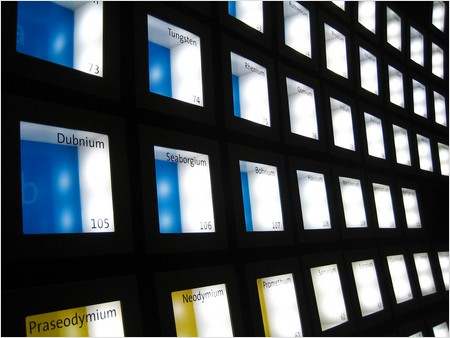October 24, 2006
At Least It's Not Putrefaction
These USGS southern california seismic hazard maps that est found are beautiful.
A few blocks over from me there's a little valley with landslide hazards on either side and a possible liquefaction zone running right down the middle.
October 20, 2006
Griffith Observatory Preview
Last night Lori was able to get us into a preview of the Griffith Observatory in Griffith Park.
The observatory closed for renovation almost immediately after I moved to LA, and $93 million later it's just about ready to open to the public again.
One of my favorite things was the asteroid impact simulator (“Impact!”). My other favorite thing was the breathtaking sunset to the right, over the ocean, and then the incredible city lights against a black sky to the left, and the transition between them.
ILC 2007 Call for Papers
The 2007 International Lisp Conference is going to be in Cambridge, England.
Following the success of our last conference, the Association of Lisp Users is now pleased to announce its next event. The venue will be Clare College in the historic centre of Cambridge, England. The conference will run from April 1st to 4th, 2007. Alongside our usual four day program of tutorials and prominent invited speakers and excellent technical sessions, this year there will also be workshops and demonstrations sessions. The conference will be rounded off with a quintessential English experience: traditional dinner served in the college's "Great Hall". Costs are expected to be broadly similar to last year's.
October 05, 2006
Powerset Decloaking
My pals at Powerset are getting some attention (a “blogstorm”!), and CEO Barney Pell publicly discusses the ideas behind the company.
I believe we are going to look back 5 to 10 years from now and say: “remember when we used to search using keywords?”. It will take hard work to get there, but that's what we're working on at Powerset!
Danny Sullivan is skeptical (and his list of dead natural language search companies is fun):
Pell does address things I've already covered -- people don't enter many words and that natural search hasn't worked before. But he argues still going ahead doesn't defy conventional wisdom, since Google did the same thing in challenging the majors.
Not correct. Google succeeded because the changes it made REQUIRED NO CHANGES ON THE PART OF THE USER. The results simply got better, even though the method of searching (and number of words) remained the same. It also succeeded because all the other major players weren't paying attention to search. Believe me, they aren't ignoring the idea of natural language search. They know about it, and if it will be successful, you bet it will be implemented long before an upstart company can try to trounce them.
Back to Pell's post, he fails to explain how searchers are somehow magically going to go beyond “keywordese” to natural language searching. They aren't using keywordese now because they somehow have been trained to do it. No one from Google sat the searchers down and said “only two words, and don't use conjunctions.” People search however they want -- and right now, they use only a few words.
If Powerset's going to change those habits, good luck.
October 03, 2006
The FAA's Working on a UAV Plan
The FAA is going to figure out this UAV thing with Lockheed's help [via Paul Parkinson]:
LOCKHEED MARTIN SELECTED TO DEVELOP FAA ROAD MAP FOR UNMANNED AIRCRAFT SYSTEMS
Lockheed Martin will assist the FAA’s Unmanned Aircraft Program Office in refining its operating plans and budgetary requirements by creating a five-year road map of government and industry UAS initiatives. By applying its technical, programmatic and specialized expertise in air traffic systems and airspace operations, Lockheed Martin will evaluate the current state of UAS mission needs, forecast their near-term demands on airspace capacity and chart a strategic plan to safely integrate their operations into the nation’s airspace
The current UAS market in the United States is primarily driven by government customers at the Departments of Defense and Homeland Security, U.S. Customs and Border Protection and the National Oceanic and Atmospheric Administration, among others. Today, according to FAA, more than 50 manufacturers offer nearly 150 UAS products, with many others poised to enter the commercial marketplace
This seems to give a little more context to the FAA's effort:
At a meeting of the ASTM F-38 UAS standards committee in the FAA’s Doug Davis announced the imminent future public release of the FAA UAS Roadmap, perhaps as early as August although that date may slip to the right. Mr. Davis presentation was directed toward ASTM’s UAS standards development work and how ASTM and RTCA SC-203 standards meshed with the FAA’s strategic plan to integrated UASs safely into the NAS. Mr. Davis described an ambitious organizational effort, populating his UAS Program Office with a full complement of staff throughout the remainder of this year and the well understood organizational budget discussions to ensure that funding is available to move his agenda forward. He’s asked of the standards group to proceed assisting the FAA to “make the safety case” through standards directed toward a “How To” document for Program Letters and Experimental Airworthiness Certificates, using the analogy – you are the quarterback – I am the wide receiver – don’t lead me too much or throw the ball behind me. Neither does the UAS industry any benefit. FAA is running as fast as prudence dictates.
And this:
Before even trying to figure out how make a detect-and-avoid system work, committee members had to start on some basics -- like describing and documenting what an unmanned aircraft is, and doing the same for their various aircraft systems, Kenagy tells Air Safety Week
[...]
The list of federal agencies also includes those with non-defense and non-security mandates, such as the Department of the Interior and the National Oceanic and Atmospheric Administration, as well as a range of local government agencies, Sabatini says.
“You name it, it's being thought of,” an FAA spokesman tells Air Safety Week. “Right now, we are seeing UAs being considered for law enforcement surveillance, meteorological conditions studies, fire fighting, disaster relief, border enforcement, etc.”
Thousands of UAs already are in use as profit-making ventures in the United States and around the world, said Embry-Riddle Aeronautical University's Robert Owen, testifying at the same March 29 hearing as Sabatini. Not only is there no current regulatory coverage, but most operators also have no insurance coverage. About the closest these craft currently come to being regulated in the United States is an FAA advisory circular on the safe operation of model airplanes.







